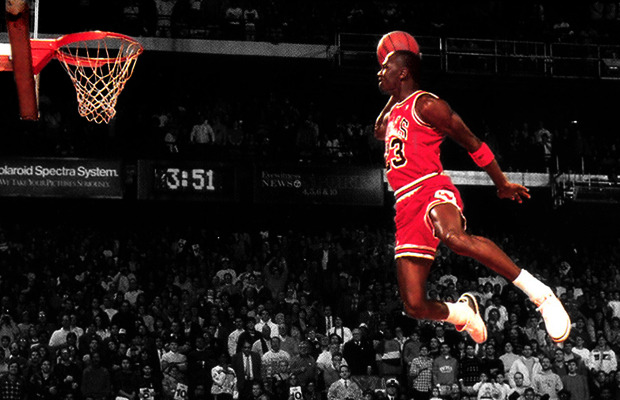Sadly, basketball players don't really hang in the air; it is just an illusion. When a basketball player jumps in the air to make a shot they can appear to be suspended in mid-air during the high point of the jump, but this is merely consequence of projectile motion. Projectile motion states that when an object is thrown in the air it will spend a large percentage of time in the top part of the throw.
If you analyze it, when you jump, there are vertical and horizontal forces acting at the same time on your body (that is why a jump is represented by an arc). The vertical component of the velocity at take-off will determine the time the you spend 'hanging', while the horizontal remains constant since it is not affected by gravity. This means that, as represented by the graph below, half of your hang time is spent on the highest 25% of the jump and this creates the illusion of you floating!
Also, the more power you have in your takeoff, the higher the arc of your jump will be and the longer you will appear to be in the air. If you want to create the illusion of a longer hang time, try some of Michael Jordan’s moves: hang on to the ball longer, pull your legs up as the jump progresses, and train to develop your leg muscles so you will be able to jump higher and seem to hang longer.





